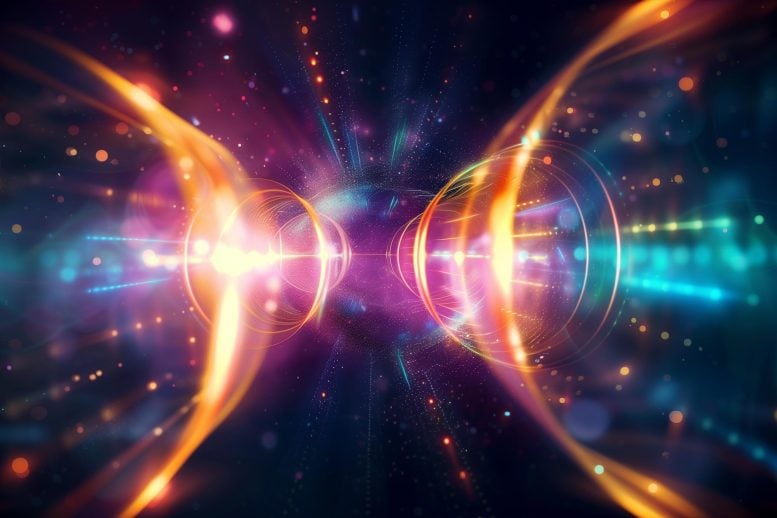
High-fidelity quantum teleportation has been achieved by the research team using a new hybrid entanglement technique that counteracts environmental noise, with a success rate close to 90%. Credit: SciTechDaily.com
Scientists have advanced quantum teleportation by mitigating noise interference through a new method involving hybrid entanglement, achieving approximately 90% fidelity in the teleportation of quantum states, which could significantly improve secure quantum communication.
A research team led by Academician Guangcan Guo from the University of Science and Technology of China (USTC) of the Chinese Academy of Sciences (CAS), in collaboration with the research team at the University of Turku, Finland, successfully overcame environmental noise to achieve teleportation high-fidelity quantum using multipartite hybrid interleaving. Their findings were recently published in the journal Advances in science.
Overcoming Challenges in Quantum Teleportation
Quantum teleportation serves as a crucial protocol in quantum communication, enabling the remote transmission of unknown quantum states through the use of quantum entanglement. However, due to the fragile nature of quantum entanglement, quantum teleportation is highly susceptible to noise. Achieving high-fidelity quantum teleportation in noisy environments has been a pressing challenge.

Phases of noisy quantum teleportation. Credit: ZHAO-DI LIU et al.
Advances in Quantum Noise Management
Previously, to address the issue of decoherence of open quantum systems in a noisy environment, the research team devised a comprehensive method for regularization the photo polarization and frequency, utilizing sophisticated optical path design and programmable spatial light modulators. This approach enabled them to create a fully controllable quantum simulator of phase decoherence and achieve quantum teleportation that surpasses noise, using nonlocal memory effects.
New techniques in quantum teleportation
However, nonlocal memory effects require strict quantum sources, such as environmental disturbances, which are generally not accessible. Based on these results, the present work presents a more versatile quantum teleportation technique that effectively attenuates environmental noise.
Using the fully controllable quantum phase decoherence simulator, the researchers introduced specific phase modulations to the medium to prepare a hybrid entangled initial state with dual polarization frequency. These photons were then distributed to two separate user terminals, each undergoing decoherence evolution.
Conclusion and Implications
Ultimately, through classical communication, the researchers performed suitable unitary operations on the received quantum bits to restore the transmitted quantum state, achieving a measured fidelity approaching 90%. The polarization states never violated Bell’s inequality, indicating quantum teleportation based on hidden quantum nonlocality.
This method provides a new way to overcome environmental noise, distinct from conventional techniques such as dynamic decoupling and decoherence-free subspaces, and enhances the understanding of quantum nonlocality.
Reference: «Overcoming Noise in Quantum Teleportation by Multipartite Hybrid Interlocking» by Zhao-Di Liu, Olli Siltanen, Tom Kuusela, Rui-Heng Miao, Chen-Xi Ning, Chuan-Feng Li, Guang-Can Guo, and Jyrki Piilo, 1 May 2024, Advances in science.
DOI: 10.1126/sciadv.adj3435
#Quantum #teleportation #real #Achieving #fidelity #noise
Image Source : scitechdaily.com